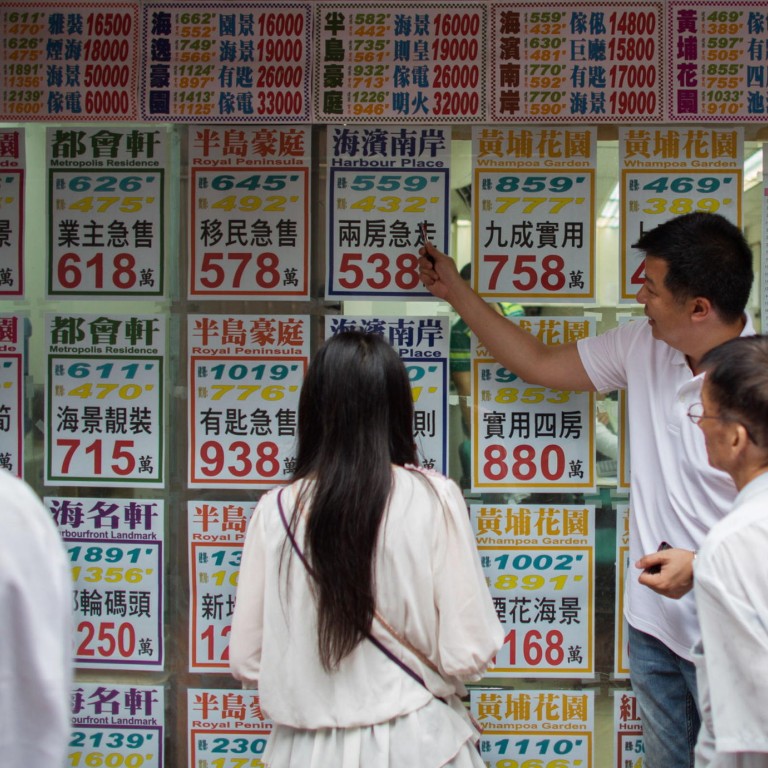
Policy changes necessary to help developers avert future housing shortage
Certain policy changes would allow private developers a bigger role in addressing the shortfall in the city's housing supply
Over the past year the Hong Kong government announced a series of measures to alleviate the housing supply shortage while simultaneously responding to vehement opposition from various parties and fending off public accusations of collusion with the city's developers.
Behind all the arguments and controversies, the main questions remain: where are we in meeting our housing target? If we are lagging far behind our goal, what should we do to catch up?
To answer these we must first look at the available sources and measures of land supply.
There are six sources at present. The lion's share comes from the Land Sale Programme, through which 4,900 units were launched in the first and second quarter of the 2013-2014 financial year. Assuming the pace of new projects remains the same, some 10,000 residential units should come on line this financial year.
By comparison, only 2,600 units are expected to be launched by West Rail projects in 2013-2014, 1,800 units by the Urban Renewal Authority (URA) projects; and 3,100 units by Mass Transit Railway Corporation (MTR) projects, which are the second largest source.
The MTR projects have been in the spotlight as projects at Tai Wai and Tin Shui Wai stations have stalled when high land premiums deterred developers from bidding. Soaring property prices and the resulting high land premiums also make private development or redevelopment projects less appealing, and have slowing the pace of project launches in recent years.
So some quick maths tells us it is unlikely that the government will meet its target of building 20,000 private residential units a year. But can we be more optimistic a decade further out? A look at several medium- to long-term measures that have recently gained media and public attention may shed light on the matter.
Despite heated debate, the North East New Territories programme is a pragmatic approach that will boost land supply significantly. If all plans for the New Development Areas are implemented, a total of 60,700 public and private units would be launched and ready for the first intake of new residents by 2023.
However, this programme has encountered unprecedented challenges, including strong resistance from residents, insufficient employment opportunity planning, and restrictive terms and conditions imposed on the land exchange programs.
Another two long-term programmes in Yuen Long South and Hung Shui Kiu face similar challenges. In both areas the private sector owns more land than the government, meaning that projects for both sites will involve extensive land resumption efforts and significant government spending on resuming land and building infrastructure.
Another long-term plan being discussed is reclamation outside Victoria Harbour. But this faces similar, if not stronger, resistance from the public - especially from residents of the Ma Liu Shui site, which has been identified as the most suitable for residential use compared to the four other proposed sites, namely Lung Kwu Tan, Siu Ho Wan, Tsing Yi Southwest and Yam O.
Moreover, a long development timeframe is needed for a reclamation area of some 410 to 630 hectares.
The medium- to long-term plans discussed above can provide a more significant stream of land supply. However, in view of all the challenges and difficulties faced by the government, we believe that private developers can play a bigger role in addressing the shortfall in housing supply by accelerating the launch of new housing units.
In other words, while the government still maintains overall control over land planning and infrastructure investment, private developers can be more active in launching new projects to ease housing shortage.
To achieve this, the government could consider adjusting policies on lease modifications and land exchange. For example, the government can review planning approval procedures in Comprehensive Development Areas, and Residential (Group E) areas, so that more individual developments can proceed, serving as catalysts for future changes in these areas.
This would immediately release residential land supply to the market, while good planning and infrastructure investment also raise the appeal of potential development projects.
We hope the government can review its current land premium assessment process to more fairly reflect the existing values of buildings and cost of land acquisition by developers.
